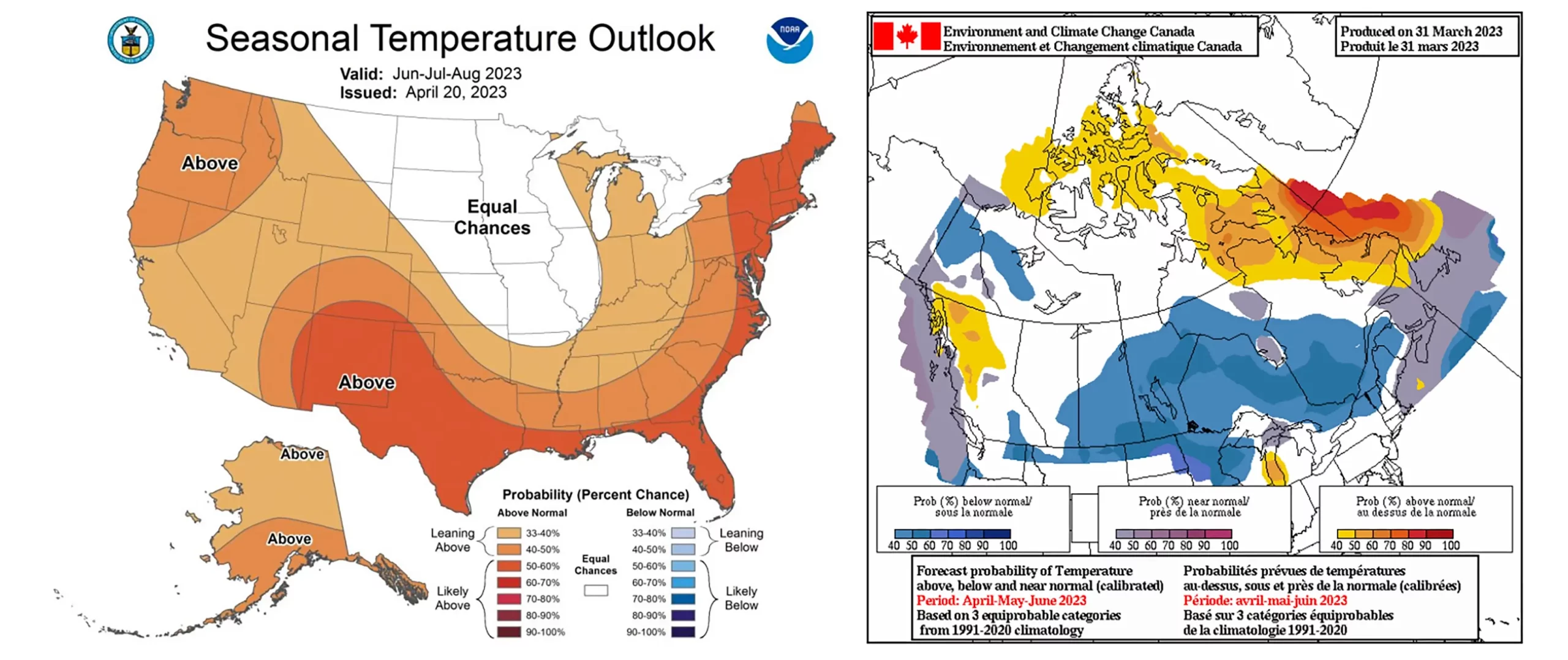A new report by the North American Reliability Corporation has shown that much of the US could experience blackouts if summer conditions are hotter than normal.
During summer and winter we can face extreme weather patterns which can easily disrupt our comfortable way of living. While most of these issues are handled quickly and sometimes without us even noticing, if we begin to face widespread blackouts across parts of the United States, the standard turnaround for fixing these issues becomes extended for an unknown period of time. During 85 – 90 degree+ days, not having power changes everything.
The assessment for June-September notes that “all areas are assessed as having adequate anticipated resources for normal summer peak load and conditions” but that some areas “face risks of electricity supply shortfalls during periods of more extreme summer conditions.”
The good news for the Appalachia region and Florida is that these areas have a low risk when approaching this summer but the majority of the rest of our country unfortunately is at an elevated risk. This does not mean you’re completely in the clear if you’re living in one of these regions as resources will need to be quickly allocated to those affected.
NERC’s annual SRA covers the upcoming four-month (June–September) summer period. This assessment provides an evaluation of generation resource and transmission system adequacy as well as energy sufficiency to meet projected summer peak demands and operating reserves.

Why Could We Face Blackouts this Summer?
Stored supplies of natural gas and coal are at high levels, but industry is monitoring for potential generator fuel delivery risks.
The natural gas supply and infrastructure is vitally important to electric grid reliability, even as renewable generation satisfies more of our energy needs. Fuel supply and delivery infrastructure must be capable of meeting the ramp rates of natural-gas-fired generators as they balance the system when solar generation output declines. Likewise, owners and operators of some coal-fired generators in the U.S. Southeast report challenges in arranging coal replenishment due to mine closures and transport delays. Consequently, some Balancing Authorities (BA) continue to employ coal-conservation measures that began in late 2022 in order to maintain sufficient stocks for peak months.
New environmental rules that restrict power plant emissions will limit the operation of coal-fired generators in 23 states, including Nevada, Utah, and several states in the Gulf Coast, mid-Atlantic, and Midwest.
The U.S. Environmental Protection Agency’s (EPA) Good Neighbor Plan, finalized on March 15, 2023, ensures that affected states meet the Clean Air Act’s “Good Neighbor” requirements by reducing pollution that significantly contributes to problems attaining and maintaining the EPA’s health-based air quality standard1 for ground level ozone (i.e., smog) in downwind states.
Coal and natural-gas-fired generators in states affected by the Good Neighbor Plan will likely meet tighter emissions restrictions primarily by limiting hours of operation in this first year of implementation rather than through adding emissions control equipment. RCs in summer-peaking areas typically are not able to authorize extended outages to upgrade systems during this summer season in order to ensure sufficient resources for high demand.
The final rule approved by the EPA includes provisions designed to give grid owners and operators flexibility to help maintain reliability, including allowance-trading mechanisms. Consequently, RCs, BAs, and GOs will need to be vigilant for emissions rule constraints that affect generator dispatchability and the potential need for emission allowance trades or waivers to meet high demand or low resource conditions. State regulators and industry should have protocols in place at the start of summer for managing emergent requests.
Low inventories of replacement distribution transformers could slow restoration efforts following hurricanes and severe storms.
The electric industry continues to face a shortage of distribution transformers as a result of production not keeping pace with demand. A survey by the American Public Power Association revealed that many utilities have low levels of emergency stocks that are used for responding to natural disasters and catastrophic events. Asset sharing programs used by utilities provide visibility and voluntary equipment sharing to maximize resources; however, electricity customers may experience delayed restoration of power following storms as crews must work to obtain new equipment. New efficiency standards for distribution transformers proposed by the U.S. Department of Energy could further exacerbate the transformer supply shortages.
Supply chain issues present maintenance and summer preparedness challenges and are delaying some new resource additions.
Difficulties in obtaining sufficient labor, material, and equipment as a result of broad economic factors has affected preseason maintenance of transmission and generation facilities in North America. These supply chain issues have led some owners and operators to delay or cancel maintenance activities that are typically performed to ensure facilities are ready for summer conditions. Additionally, GOs in some areas that were preparing to interconnect new generation are facing delays that will prevent some from being available to meet expected peak summer demand.
Winter precipitation is expected to improve the water supply for hydro generation in parts of the U.S. West, but low water levels on major reservoirs remain a concern for electricity generation.
Significant amounts of rainfall and high elevation snow are expected to help replenish reservoirs and maintain river flows that provide energy for most of California’s hydroelectric facilities. However, reservoirs at the largest hydro facilities in the U.S. West, including Washington’s Grand Coulee Dam and the Hoover Dam on the Arizona-Nevada border, remain at historic low levels, potentially limiting hydroelectric energy output. Power from these plants is used throughout the U.S. Western Interconnection.
In addition to the risk items identified in the Key Findings, resource outages will continue to present challenges in many areas during “near-peak” demand conditions that occur in spring and fall.
Many parts of North America experience elevated temperatures that extend beyond the summer (June–September) months into periods when BPS equipment owners and operators historically scheduled outages for maintenance. Increasingly, BAs are facing resource constrained periods during shoulder months as unseasonable temperatures coincide with generator unavailability. Careful attention to long-term weather forecasts and the potential for unusual heat patterns in the shoulder months is important to inform the need for more conservative outage coordination periods.
Summer Temperature and Drought Forecasts
Peak electricity demand in most areas is directly influenced by temperature. Weather officials are expecting above normal temperatures for much of the United States while Canada is largely expected to see normal or below-normal average temperatures. In addition, drought conditions continue across much of the western half of North America, resulting in unique challenges to area electricity supplies and potential impacts on demand.
Assessment area load forecasts account for many years of historical demand data, often up to 30 years, to predict summer peak demand and prepare for more extreme conditions. Above average seasonal temperatures can contribute to high peak demand as well as an increase in forced outages for generation and some BPS equipment. Effective preseason maintenance and preparations are particularly important to BPS reliability in severe or prolonged periods of above-normal temperatures.

To learn more, read the full 2023 Summer Reliability Assessment Report.








